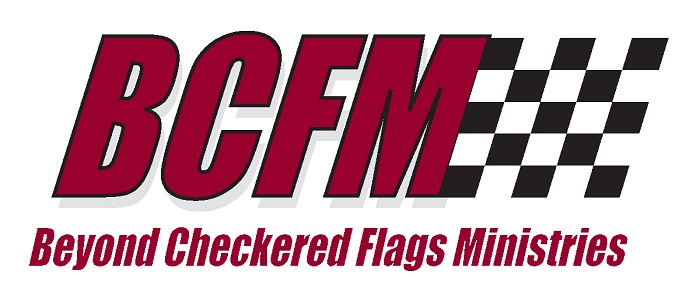Chapel Service
Havasu 95 Speedway
April 14, 2012
“Resurrection Day Repercussions”
Bob Butcher
You likely already know that Resurrection Day (Easter) is my favorite day. This last weekend I had some wonderful conversations and questions about this day. That’s why I have chosen to take time to look into a few puzzling scriptures in Matthew 27. Let’s take a look together.
First, verse 50: “Then Jesus cried out again with a loud voice, and yielded up His spirit.
- My point here is simple. I want you to realize that Jesus allowed His spirit to leave His body. It WAS NOT TAKEN from Him! It was part of the plan all along.
- This was a sign that, after all his pains and fatigues, his life was whole in him, and nature strong. The voice of dying men is one of the first things that fails; with a faint breath and a faltering tongue, a few broken words are hardly spoken, and what’s more; hardly heard. But Christ, just before He expired, spoke like a man in his full strength, to show that His life was not forced from Him, but was freely delivered by Him into His Father’s hands, as His own act and deed.
- Jesus yielded up His spirit. This usual sign of dying showed that He did truly and properly die by the violence of the pain He was put to. His soul was separated from His body, and so His body was left really and truly dead.
- Jesus had come to drink the cup of suffering (Matthew 26:39), the cup of God’s wrath (Jeremiah 25:15-29). Our Lord is both our model, obedient and uncomplaining as He serves the Father no matter what the cost, and our Savior, who offers Himself for the sins of the world.
Verse 51: “At that moment the curtain of the temple was torn in two from top to bottom.”
- From my study one thing most amazing is that that veil/curtain was tightly woven twined tapestry and at least three inches thick! That is not something ripped, torn, even burned easily!
- The whole reason for the veil in the temple was to separate the Holy of Holies from anyone approaching except the appointed priest; and only once a year.
- It signified the consecrating and laying open of a new and living way to God. The veil kept people off from drawing near to the most holy place, where the Shechinah (God visible residence) was. But the rending of it signified that Christ by His death opened a way to God. It also opened the approach to God by anyone not Jewish once and for all.
- Though Jesus did not personally ascend into the Holy Place not made with hands till Pentecost fifty days later, yet He immediately acquired a right to enter, and we also had a virtual admission per Hebrews 10: 19-20. We have boldness to enter into the holiest, by that new and living way which he has consecrated for us through the veil. He died, to bring us to God, and, rend that veil of guilt and wrath which separated us from Him, to take away the cherubim and flaming sword, and to open the way to the tree of life. We have free access through Christ to the throne of grace, or mercy-seat, now, and to the throne of glory hereafter, (Hebrews 4:16; 6: 20).
Verse 51b: “…the earth quaked, and the rocks were split,…”
- This earthquake signified the horrible wickedness of Christ’s crucifiers. The earth, by trembling under such a load, bore its testimony to the innocence of Him that was persecuted, and against the blasphemy & hypocrisy of those that persecuted Him. Never did the whole creation, before, groan under such a burthen as the Son of God crucified. The earth quaked, as if it feared to open its mouth to receive the blood of Christ.
- The rocks rent; the hardest and firmest part of the earth was made to feel this mighty shock. Christ had said, that if the children should cease to cry Hosanna, (save now) the stones would immediately cry out; and now, in effect, they did so, proclaiming the glory of the suffering Jesus, and themselves more sensible of the wrong done Him than the hard-hearted Jews were, who will shortly be glad to find a hole in the rocks, and a cleft in the ragged rocks, to hide them from the face of Him that sits on the throne. (Revelation 6:16, Isaiah 2:21, Nahum 1:6).
Verse 52: “…What’s more, tombs were opened up, and many bodies of believers asleep in their graves were raised.”
- Who were they? That cannot be proved, but here are the ideas:
- ancient patriarchs, since Jesus had just spoken on resurrection in Matthew 22:32 referring to them.
- Old Testament martyrs who had sealed the truths of God with their blood. Christ particularly points at them as His forerunners, (Matthew 23:35), and those who were beheaded for the testimony of Jesus, arose before the rest of the dead. Sufferers with Christ shall first reign with Him so says Revelation 20: verse 4 & 5. (Also note 1 Thessalonians 4:16-18 & first fruits)
- There are other ideas, but seemingly far less probable.
Verse 53: “After Jesus’ resurrection, they left the tombs, entered the holy city, Jerusalem and appeared to many.”
- Death to the saints is but the sleep of the body, and the grave the bed it sleeps in. They awoke by the power of the Lord Jesus, and came out of the graves after His resurrection.
- Note that some think that they arose only to bear witness of Christ’s resurrection to those to whom they appeared, and, having finished their testimony, retired to their graves again. But, far more likely, though we cannot prove it, they arose as Christ did, to die no more, and therefore ascended with Him to glory. Surely on them who did partake of his first resurrection, a second death had no power.
- To whom they appeared (not to all the people it is certain, but to many), whether enemies or friends, in what manner they appeared, how often, what they said and did, and how they disappeared, are secret things which do not belong not to us today; so let’s not try to go beyond what is written, or use it for a confirmation of our faith. We certainly have a more sure word of prophecy for us to stand upon in Luke 16:31.
- Yet, we may learn many good lessons from it like: even those who lived and died before the death and resurrection of Christ, had the saving benefit, as well as those who like us today have lived since; for He was the same yesterday that He is today, and will be for ever. (Hebrews 13: 8). Jesus Christ, by dying, conquered, disarmed, and disabled, death.
- These saints that arose were the first trophies of the victory of Christ’s cross over the powers of death, which He thus made a show of openly. Having by death destroyed him that had the power of death, Jesus led captivity captive, and gloried in these re-taken prizes, in them fulfilling that scripture, I will ransom them from the power of the grave. That, in virtue of Christ’s resurrection, the bodies of ALL the saints shall, in the fullness of time, rise again.
- This is the first revelation of the last resurrection at the last day, when all that are in the graves shall hear the voice of the Son of God.
- Perhaps Jerusalem is called the holy city here because the saints, at the last resurrection, shall enter into the New Jerusalem; which will be indeed what the other was in name and type only, the holy city, (Revelation 21:2).
- Then, as all the saints do, by the influence of Christ’s death, and conforming to it, rise from the death of sin to the life of righteousness. We are raised up with Christ to a divine and spiritual life; go into the holy city, become citizens of it, have conversation in it, and appear too many, as persons not of this world.
- Jesus uses the parable of the Rich Man and Lazarus in Luke 16: 19-31 to describe pre-crucifixion Hades where the Old Testament saints reposed until Christ’s resurrection while waiting for Jesus to cover their sins. Then Jesus led them out as “He led captivity captive” or in my words took many captives of Hades with Him. (Ephesians 4:8 and Psalms 68:18)
Three Old Testament passages shed light on the significance of this episode: Isaiah 26:19, Daniel 12:2, Ezekiel 37:12-14.
What significance do all these events have? Very simple, it proved beyond a doubt that Jesus was the Messiah. Can you imagine living in that time period and seeing all these resurrected people walking in your streets? The Scriptures do not tell us if these saints said anything about Jesus. It only points out that they walked the streets of Jerusalem. Their presence alone was proof enough that Jesus was no ordinary man. Their resurrection could only be explained that Jesus was the Messiah.
Death and resurrection are also inseparable for us as believers today. Since Jesus’ atoning sacrifice has been offered, the OT saints (the “many holy people” of verse 52) are saved from the consequences of their sins and gain the right to resurrection life as much as us today. Our bodies shall be raised from the dead at his Return and we will be given bodies like Jesus’ own glorious body. (Philippians 3:20-21;1 Corinthians 15; and Matthew 27:52-53) foreshadow this event. Meanwhile, our spirit lives and is present with the Lord. (2 Corinthians 5:8)
I don’t know about you but this ol’ body of mine needs a resurrection! …despite how good shape I am still in today.
I also hope that you do not just take my word for all this, but instead take time to look up all these scriptures for yourself and boldly ask the Lord to reveal revelation to you so that you become stronger in your faith.
Resources:
- InterVarsity Press Commentary
- Matthew Henry’s Commentary
- Word Studies in the Greek New Testament, Vol. III, pp. 147 – 152, – Kenneth Wuest
- Commentary by: J. Vernon McGee, Arthur Pink, John MacArthur, Charles Swindoll
- BibleGateway.com, BibleStudyTools.com
- My personal Bible College Notes, Books – 1979 – 1986
- A Bible College class debate with students, Professors, and Pastors on subject – 1979-1986


